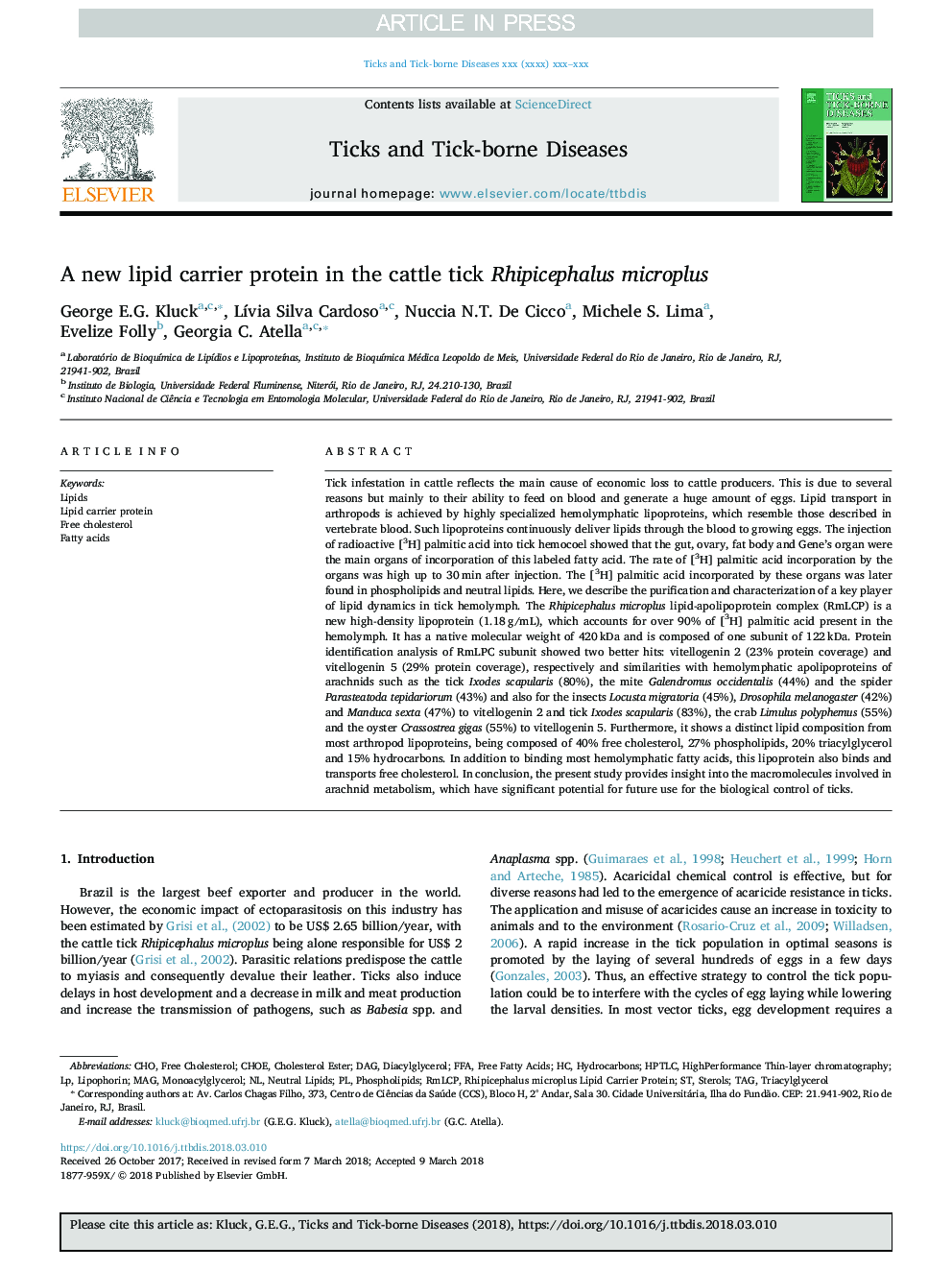| Article ID | Journal | Published Year | Pages | File Type |
|---|---|---|---|---|
| 8507201 | Ticks and Tick-borne Diseases | 2018 | 10 Pages |
Abstract
Tick infestation in cattle reflects the main cause of economic loss to cattle producers. This is due to several reasons but mainly to their ability to feed on blood and generate a huge amount of eggs. Lipid transport in arthropods is achieved by highly specialized hemolymphatic lipoproteins, which resemble those described in vertebrate blood. Such lipoproteins continuously deliver lipids through the blood to growing eggs. The injection of radioactive [3H] palmitic acid into tick hemocoel showed that the gut, ovary, fat body and Gene's organ were the main organs of incorporation of this labeled fatty acid. The rate of [3H] palmitic acid incorporation by the organs was high up to 30â¯min after injection. The [3H] palmitic acid incorporated by these organs was later found in phospholipids and neutral lipids. Here, we describe the purification and characterization of a key player of lipid dynamics in tick hemolymph. The Rhipicephalus microplus lipid-apolipoprotein complex (RmLCP) is a new high-density lipoprotein (1.18â¯g/mL), which accounts for over 90% of [3H] palmitic acid present in the hemolymph. It has a native molecular weight of 420â¯kDa and is composed of one subunit of 122â¯kDa. Protein identification analysis of RmLPC subunit showed two better hits: vitellogenin 2 (23% protein coverage) and vitellogenin 5 (29% protein coverage), respectively and similarities with hemolymphatic apolipoproteins of arachnids such as the tick Ixodes scapularis (80%), the mite Galendromus occidentalis (44%) and the spider Parasteatoda tepidariorum (43%) and also for the insects Locusta migratoria (45%), Drosophila melanogaster (42%) and Manduca sexta (47%) to vitellogenin 2 and tick Ixodes scapularis (83%), the crab Limulus polyphemus (55%) and the oyster Crassostrea gigas (55%) to vitellogenin 5. Furthermore, it shows a distinct lipid composition from most arthropod lipoproteins, being composed of 40% free cholesterol, 27% phospholipids, 20% triacylglycerol and 15% hydrocarbons. In addition to binding most hemolymphatic fatty acids, this lipoprotein also binds and transports free cholesterol. In conclusion, the present study provides insight into the macromolecules involved in arachnid metabolism, which have significant potential for future use for the biological control of ticks.
Keywords
Related Topics
Life Sciences
Agricultural and Biological Sciences
Animal Science and Zoology
Authors
George E.G. Kluck, LÃvia Silva Cardoso, Nuccia N.T. De Cicco, Michele S. Lima, Evelize Folly, Georgia C. Atella,
